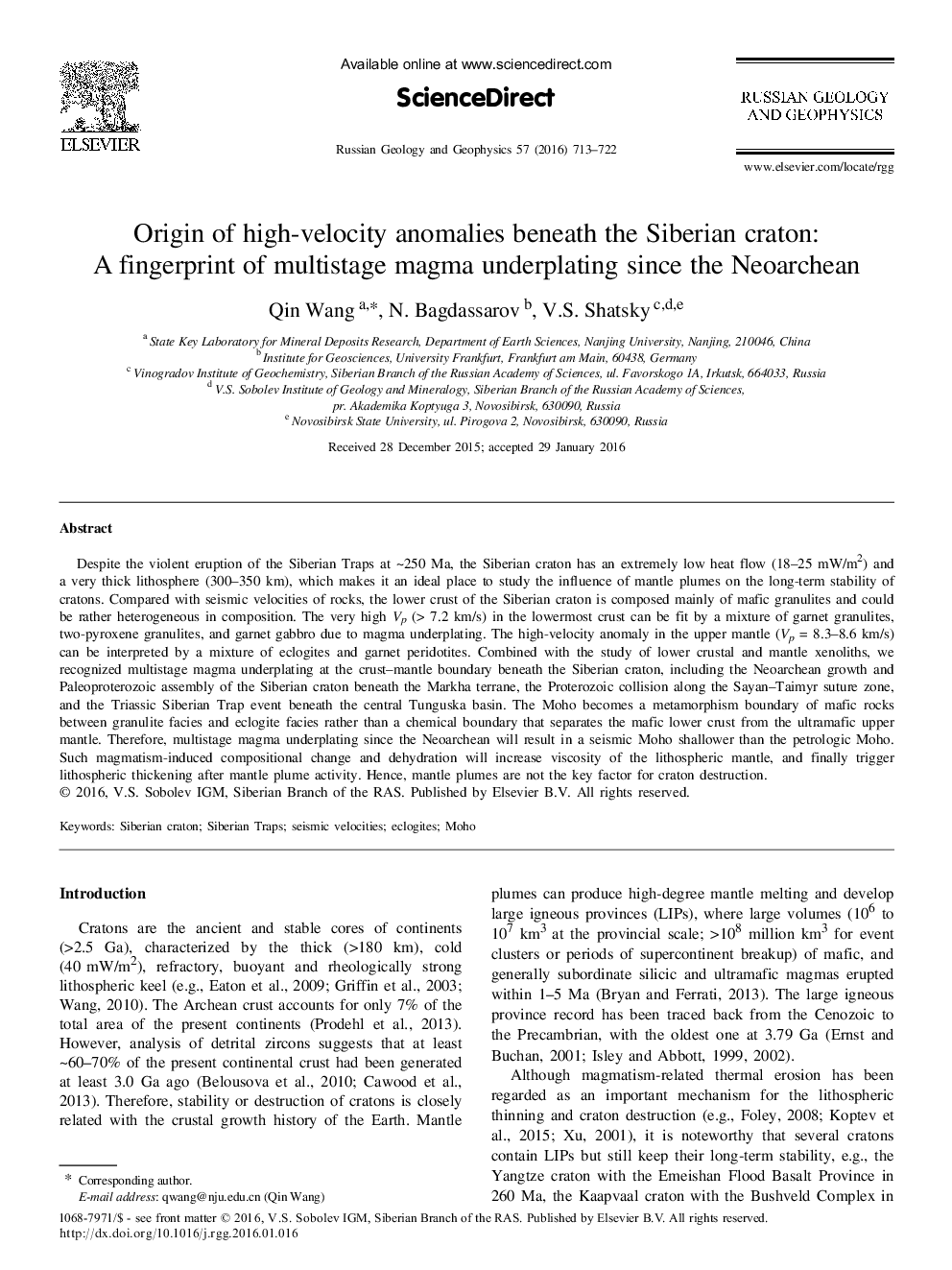| Article ID | Journal | Published Year | Pages | File Type |
|---|---|---|---|---|
| 4737229 | Russian Geology and Geophysics | 2016 | 10 Pages |
Despite the violent eruption of the Siberian Traps at ~ 250 Ma, the Siberian craton has an extremely low heat flow (18–25 mW/m2) and a very thick lithosphere (300–350 km), which makes it an ideal place to study the influence of mantle plumes on the long-term stability of cratons. Compared with seismic velocities of rocks, the lower crust of the Siberian craton is composed mainly of mafic granulites and could be rather heterogeneous in composition. The very high Vp (> 7.2 km/s) in the lowermost crust can be fit by a mixture of garnet granulites, two-pyroxene granulites, and garnet gabbro due to magma underplating. The high-velocity anomaly in the upper mantle (Vp = 8.3-8.6 km/s) can be interpreted by a mixture of eclogites and garnet peridotites. Combined with the study of lower crustal and mantle xenoliths, we recognized multistage magma underplating at the crust-mantle boundary beneath the Siberian craton, including the Neoarchean growth and Paleoproterozoic assembly of the Siberian craton beneath the Markha terrane, the Proterozoic collision along the Sayan-Taimyr suture zone, and the Triassic Siberian Trap event beneath the central Tunguska basin. The Moho becomes a metamorphism boundary of mafic rocks between granulite facies and eclogite facies rather than a chemical boundary that separates the mafic lower crust from the ultramafic upper mantle. Therefore, multistage magma underplating since the Neoarchean will result in a seismic Moho shallower than the petrologic Moho. Such magmatism-induced compositional change and dehydration will increase viscosity of the lithospheric mantle, and finally trigger lithospheric thickening after mantle plume activity. Hence, mantle plumes are not the key factor for craton destruction.
